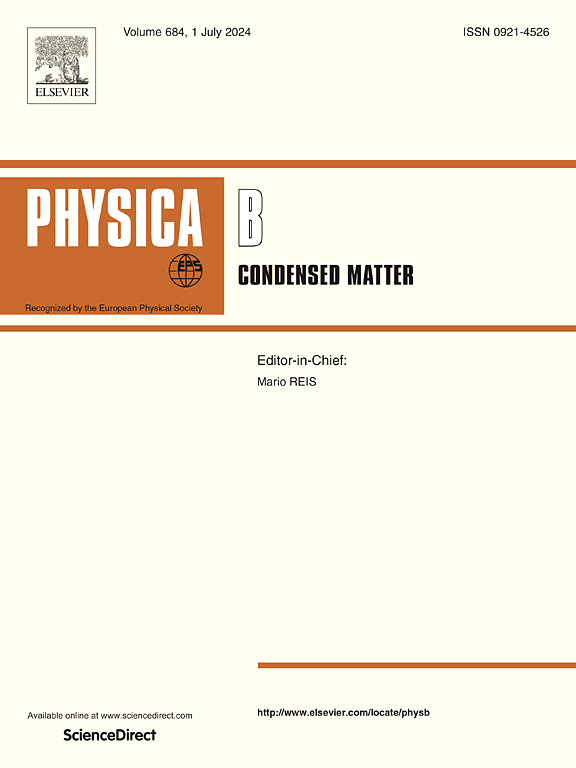Non-toxic KGeX3 (X= I, Br, Cl) monolayer perovskites as an absorption layer in solar energy converters: A first principle study
IF 2.8
3区 物理与天体物理
Q2 PHYSICS, CONDENSED MATTER
引用次数: 0
Abstract
The study of Ge-based perovskite materials aims to reduce pollution and create highly efficient perovskite-based solar cells. We investigate the structural, electronic, and optical properties of bulk and monolayer forms of KGeX3 (where X = I, Br, or Cl) perovskites using density functional theory (DFT). Phonon dispersion curves confirm the dynamic stability of KGeX3. Several materials in the field exhibit direct bandgap semiconductor properties. As we progress from I to Br and from Br to Cl in KGeX3, there is a clear trend of increasing bandgap values. The static dielectric constant of KGeI3 is higher than that of KGeBr3 and KGeCl3, indicating a lower carrier recombination rate. A redshift is also observed in the absorption coefficient data as the transition in KGeX3 progresses from Cl → Br → I. The efficiencies of bulk KGeI3, KGeBr3, and KGeCl3 were estimated to be approximately 15.57 %, 23.43 %, and 31.70 %, respectively, using the Shockley-Queisser (SQ) limit. For monolayer forms, the efficiencies of KGeI3, KGeBr3, and KGeCl3 were found to be approximately 28.77 %, 32.38 %, and 22.99 %, respectively. The KGeX3 nanoparticle structure is promising for the light-absorbing layer in solar photovoltaic applications.
求助全文
约1分钟内获得全文
求助全文
来源期刊

Physica B-condensed Matter
物理-物理:凝聚态物理
CiteScore
4.90
自引率
7.10%
发文量
703
审稿时长
44 days
期刊介绍:
Physica B: Condensed Matter comprises all condensed matter and material physics that involve theoretical, computational and experimental work.
Papers should contain further developments and a proper discussion on the physics of experimental or theoretical results in one of the following areas:
-Magnetism
-Materials physics
-Nanostructures and nanomaterials
-Optics and optical materials
-Quantum materials
-Semiconductors
-Strongly correlated systems
-Superconductivity
-Surfaces and interfaces
 求助内容:
求助内容: 应助结果提醒方式:
应助结果提醒方式:


